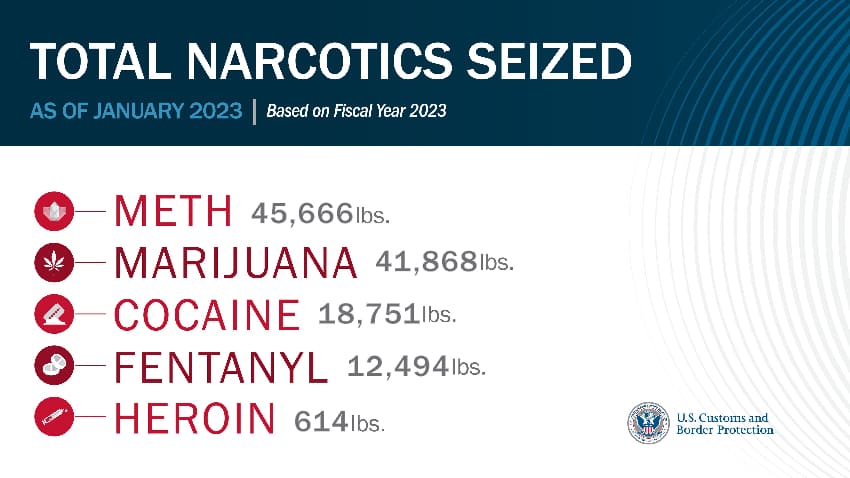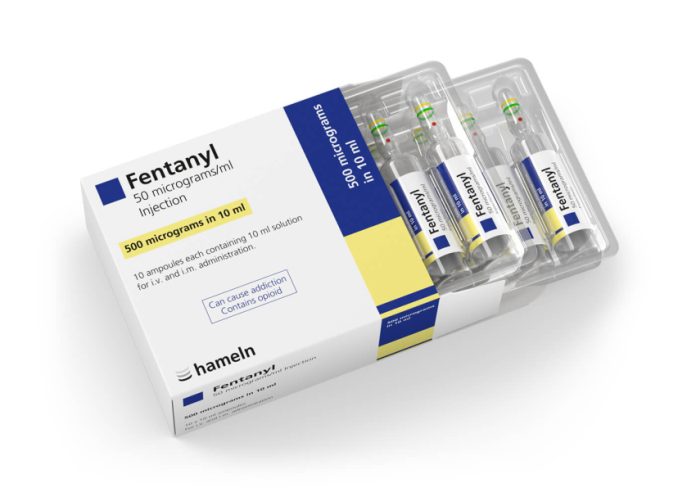President Andrés Manuel López Obrador has proposed the possibility of banning the medicinal use of fentanyl, saying he will ask Mexican doctors and scientists to analyze whether other strong pain relievers could be used in its place.
López Obrador had much to say this week about the powerful synthetic opioid blamed for fueling a surge of drug overdose deaths in the United States and creating tensions between Mexico and its northern neighbor.

At his Wednesday morning press conference, the president stated that if his administration manages to ban fentanyl in medical settings, he will request that the U.S. do the same.
He also assured that his administration is currently doing more work against fentanyl than the United States, where he alleged the drug is distributed with impunity and there are no known seizures or arrests of those responsible.
Yet, he added, U.S. legislators and authorities find it easy to unjustifiably blame Mexico.
López Obrador also argued that young people in the U.S. resort to drugs because of the disintegration of families and moral values — and that the U.S. should address young people’s feelings of unhappiness, abandonment and dissatisfaction like Mexico does.
In his Thursday morning press conference, he pushed back against U.S. criticism of his record of cracking down on fentanyl trafficking by saying Mexico is not responsible for most of the fentanyl that enters the U.S.
Last month Anne Milgram, head of the U.S. Drug Enforcement Administration (DEA) told a congressional hearing on drug trafficking that Mexico’s Sinaloa Cartel and rival Jalisco New Generation Cartel (CJNG) were responsible for the “vast majority of fentanyl that is coming into the United States.”
“I maintain that more fentanyl reaches the United States and Canada directly than reaches Mexico,” countered López Obrador.

The 69-year-old president, whose term is set to end Sept. 30, 2024, said Mexican officials had explained to him that only blue fentanyl pills turned up in Mexico.
“Over in the United States, they’ve got all colors and flavors,” he said.
U.S. authorities have reported that illegal fentanyl is produced in secret Mexican labs using Chinese precursor chemicals and that most of it is pressed into counterfeit pills made to look like medications such as Xanax, oxycodone or Percocet.
Some Republican lawmakers want the U.S. to designate Mexican drug gangs as terrorist organizations and to use the U.S. military to fight them. López Obrador has vigorously rejected such suggestions, arguing that his government has seized more illegal fentanyl than “ever before.”
“We are not going to be their servants,” he said of the U.S. and its calls to crack down on the cartels. “We were elected by the people of Mexico to protect Mexicans.”
He said the DEA “has proved it can’t handle” the problem.

Foreign Affairs Minister Marcelo Ebrard said those in the U.S. calling for tougher measures were “ungrateful” for Mexico’s efforts. He and López Obrador said Mexican diplomats north of the border would begin a public education campaign in the U.S. to highlight Mexico’s interdiction efforts.
However, there have been only scattered and isolated reports of medicinal fentanyl making it onto the illegal market.
López Obrador said other analgesics besides fentanyl were the norm in medicine before and could be used again if considered effective.
If doctors and scientists see his proposal as viable, he will commit to combating all the illegal entry of fentanyl into Mexico, he added.
A day after the proposed ban, one prominent Mexican doctor dismissed it as impractical because there are certain patients who respond favorably only to fentanyl.
“There are patients who can only be controlled with this medication and, in fact, fentanyl is very commonly used within the field of anesthesia and intensive care,” said Dr Luz Adriana Templos Esteban, head of the Palliative Care and Clinic Division of the Pain at the Gea González Hospital of the Ministry of Health.
Templos said the recreational use of fentanyl — when dosage is not carefully controlled — is very dangerous and addictive, but is non-fatal in medical use. Rather, “it helps patients [with] their surgeries” and helps “to treat severe pain,” she said.
She also noted that if authorities want to approve replacing fentanyl with morphine, oxymorphone, oxycodone or hydromorphone, they should address the shortages of these types of medications that exist globally.
With reports from El Economista, El Sol de México, Reuters and Associated Press
